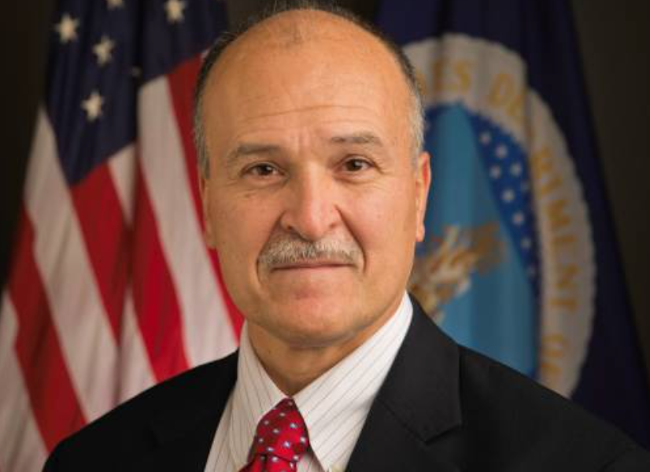
TONONTO — IAFP 2023 in Toronto this week was not his first rodeo.
We are talking about Jose Emilio Esteban, our new USDA Undersecretary for Food Safety.
This week’s International Association for Food Protection annual meeting and conference was the first opportunity for him to engage with the larger food safety community and for them to see Esteban up close and personal.
When he was he was confirmed by the U.S. Senate shortly before 2023 began, Esteban was already experienced in the leadership of the International Association for Food Protection (IAFP). He only had to withdraw because the President named him to the highest food safety office in the federal government.
To become sworn in as Undersecretary of food safety is no small accomplishment. It took Esteban 10 months to be approved for the Presidential appointment, and then he had to wait another 10 months for his Senate confirmation. He says it is helpful to have patience in his skillset.
His long wait was likely easier than some of his predecessors experienced. He was not from out of town but already in the leadership of USDA’s Food Safety and Inspection Service (FSIS). And Esteban has been a resident of the Washington D.C. area for five years.
Before his confirmation as Undersecretary for Food Safety, Esteban worked since 2001 in several roles at the FSIS. Most recently, he was chief scientist at the FSIS from 2018 to 2022.
And before joining the USDA, Esteban was at the Centers for Disease Control and Prevention.
During his first months as Undersecretary, Esteban made decisions about cell-cultured products, “Product of USA” labeling, and food safety labeling in general.
In his speaking engagements and private remarks at IAFP in Toronto, Esteban explained that three options are being considered when it comes to Salmonella in poultry.
Incoming flocks might be tested for Salmonella before entering a slaughter establishment, better process control monitoring and FSIS verification could be required, or an enforceable final product standard might be adopted.
Esteban trained as a veterinarian in Mexico. He holds an MBA, a master’s degree in Preventive Veterinary Medicine, and a Ph.D. in Epidemiology from the University of California-Davis.
Esteban said that public comments run until July 27 on whether not-ready-to-eat breaded stuffed chicken products that contain Salmonella at levels of one colony-forming unit per gram or higher are adulterated. Esteban said the comment period might be extended because there has been a request for more time.
A veterinarian himself, Esteban also must deal with the shortage of licensed DVMs that makes it difficult for USDA to recruit and hire additional veterinarians. He said exit interviews indicate that USDA is not losing DVMs over money but because they dislike the job requirements.
There has not been any “get to know you” time since Esteban assumed command of food safety at USDA. Deputy Undersecretary Sandra Eskin, FSIS Administrator Paul Kiecker, and all the others at the top of FSIS are all well known to Esteban, and they know him.
Under Esteban, there’s the possibility lining up that some food safety improvements could be in the makings. Esteban knows the power he now has and how short his time will likely be.
(To sign up for a free subscription to Food Safety News, click here.)
